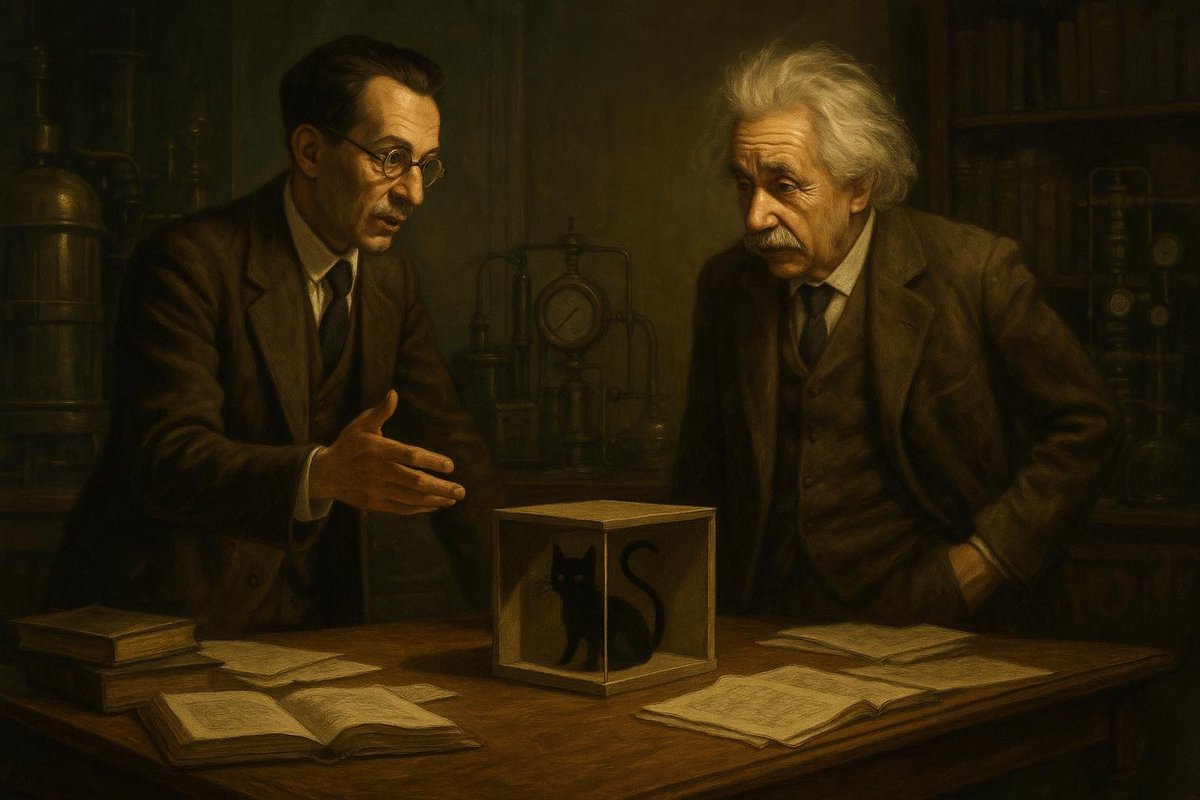
Hypothesis & Context
Imagine a world where a cat can be both alive and dead simultaneously. This is the intriguing premise of Schrodinger’s Cat, a thought experiment that has puzzled and fascinated scientists and philosophers since its inception. Developed by physicist Erwin Schrödinger in 1935, this experiment seeks to illustrate the strange and counterintuitive nature of quantum superposition.
Before this thought experiment, quantum mechanics was already revolutionizing physics. Yet, its abstract principles left many grappling with understanding reality. How could particles exist in multiple states until observed? Schrödinger himself was motivated by the challenge of visualizing this perplexity. The cat in the box was not just a quirky scenario but a pointed critique of the Copenhagen interpretation of quantum mechanics.
Why does this matter? Because quantum superposition defies our everyday experiences, challenging our notions of reality. The cultural backdrop of the early 20th century, with its rapid advancements in science and technology, provided fertile ground for such revolutionary ideas. As Schrödinger posed his paradox, he invited the world to question the very fabric of reality.
- Before Schrödinger: Quantum mechanics lacked intuitive models.
- Schrödinger’s motivation: Critique of the Copenhagen interpretation.
- Historical context: Early 20th-century scientific revolution.
Setup & Method
Picture a sealed box containing a cat, a radioactive atom, a Geiger counter, and a vial of poison. The setup is simple but devilishly thought-provoking. If the atom decays, the Geiger counter detects it, breaking a vial of poison and killing the cat. If the atom remains undecayed, the cat lives. Crucially, until the box is opened and an observation is made, the cat is both alive and dead, existing in a superposition of states.
The brilliance of this thought experiment lies in its stark illustration of quantum mechanics’ peculiarities, which defy classical intuition. Schrödinger constructed this scenario to provoke critical reflection on quantum theory’s interpretations. It raises profound questions: Does reality depend on observation? Or do our observations merely reveal pre-existing states?
In the world of quantum physics, the act of measurement collapses the superposition into a definite state. But why must observation dictate reality? This dilemma sparked debates and inspired countless variations of this conceptual setup, urging scientists to rethink the observer’s role in the quantum world.
- Components: Cat, radioactive atom, Geiger counter, poison.
- Main principle: Quantum superposition remains until observed.
- Philosophical question: Does observation create reality?
Results & Reactions
The reactions to Schrödinger’s thought experiment were as varied as they were vocal. It ignited discussions that spanned physics, philosophy, and even the arts. Some viewed it as a potent critique of the Copenhagen interpretation, which posits that particles exist in all states until observed. Others saw it as a fascinating illustration of quantum mechanics’ complexities.
Famed physicist Albert Einstein reportedly supported Schrödinger’s critique, famously favoring the idea of an objective reality independent of observation. Meanwhile, Niels Bohr, a proponent of the Copenhagen interpretation, insisted that quantum mechanics accurately described reality despite its paradoxes. These debates shaped the course of quantum physics and influenced how scientists conceptualize the microscopic world.
Interestingly, Schrödinger’s Cat has transcended its scientific roots, becoming a cultural icon that symbolizes the enigmatic nature of quantum mechanics. It bridges the gap between scientific theory and public imagination, challenging us to ponder the limits of human cognition and the nature of reality.
- Debate: Objective reality vs. observer-dependent reality.
- Einstein’s stance: Critique of observer-dependent reality.
- Bohr’s stance: Acceptance of quantum paradoxes.
Implications
Schrödinger’s Cat continues to influence scientific thought and spark philosophical debates. It illustrates the tension between classical intuition and quantum reality, pushing us to confront the cognitive barriers that limit our understanding. Are these paradoxes inherent to nature, or are they artifacts of our limited perspective?
This thought experiment has inspired further investigations into quantum mechanics, leading to concepts like quantum entanglement and decoherence. It underscores the importance of questioning assumptions and recognizing the provisional nature of scientific knowledge.
As time goes on, Schrödinger’s Cat remains a powerful reminder that our current understanding of reality may be just the beginning. It invites us to embrace the unknown and to continue exploring the mysteries of the universe with curiosity and humility.
- Inspiration: Quantum entanglement, decoherence.
- Challenge: Cognitive barriers in understanding reality.
- Future: Embracing the unknown in scientific exploration.
Schrödinger’s Cat has become a timeless symbol of the mysteries that lie at the heart of quantum mechanics. It challenges us to question the nature of reality and the limits of human cognition. Whether it reveals the true nature of quantum phenomena or simply highlights our cognitive limitations, it remains a testament to the power of thought experiments in expanding our horizons.
Fuel Someone Else’s Curiosity
If this article intrigued you, share it with a friend or colleague. Let’s spark discussions and fuel curiosity about the fascinating world of quantum mechanics and the limits of human understanding. Who knows? You might just inspire the next great thinker!

Leave a Reply